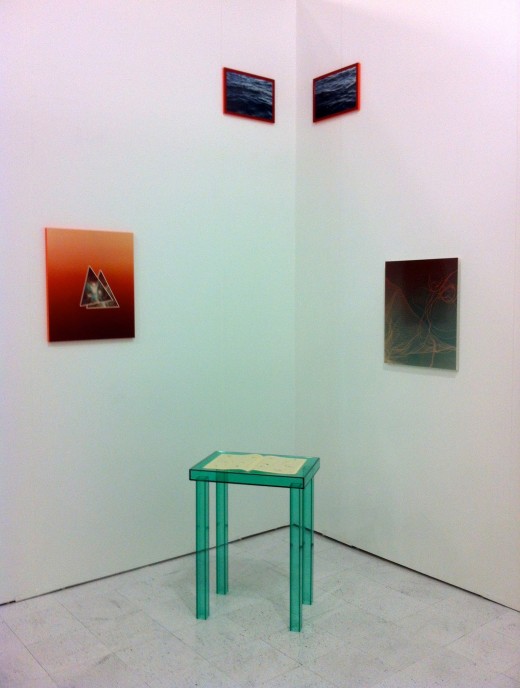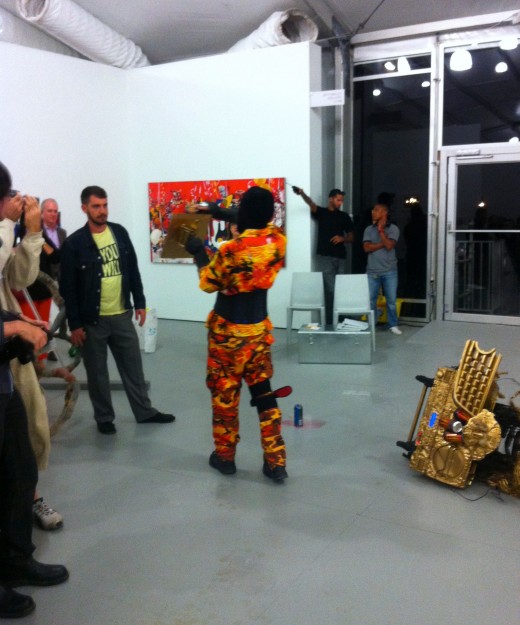
Parker Ito's vinyl on enamel paintings at Steve Turner, booth C32
I have to admit, I allowed for casual Miami conversations during the months prior to Basel to inform my prejudices of the new Untitled art fair. And even though I know Omar, the curator of the fair, I was skeptical. For one, I’m weary of the term “curator,” at this point (even Kanye is a self-proclaimed curator). And I questioned the need for one in the art fair structure specific to Art Basel Miami Beach and all of it’s current satellite fairs (even though I generally favor ventures that have a high level of self-awareness). Also there’s the whole novelty of the fair being on the beach. Like, the beach beach. It all seemed like a convenient gimmick. Not to say I wasn’t expecting a quality fair, I just fell victim to all the cynics of Miami awaiting the blur of Basel. And not having done research of my own, it was all I had to go by.


All that being said, I was pleasantly surprised.Upon entering the fair, my first impression was that it was spacious and airy, lacking the usual overwhelming assault of work. The initial booths were large, allowing for dynamic placements of the pieces. Rather than an inventory selection, each gallery presented what looked like a small solo or group exhibition.
One of the first booths that caught my eye was that of the gallery Carter & Citizen. They presented a very concise and exquisitely produced body of work by Kelly Kleinschrodt titled vvater cut. This booth alone would of been worth the outing. It’s a strong solo exhibition in its own right.

Kelly Kleinschrodt’s vvater cut, Carter & Citizen, booth D45
Across the tent, a performance by El Salvadorian artist Irvin Morazan was happening. It was quietly ritualistic yet lively, a perfect combo for a spectacle driven week. It concluded with a masked Morazan pouring Monster energy drinks over a mirror reflecting the faces of select audience members. I caught Morazan performing the ritual on local Miami artist Nicolas Lobo’s reflection (wearing a shirt of his own design).

Irvin Morazan’s performance
Traversing the rest of the booths, I couldn’t help but hear visitors questioning gallerists on how exactly this whole “curated fair” works. It seemed to be a common topic of conversation. I was walking around with artist Brookhart Jonquil, who said that having a lead curator “shifts the priority towards showing and the viewing experience, rather than just marketability.” There’s no doubt the galleries want to sell, but the risks being taken are extremely refreshing, and placed the work in a better position to be visualized in a potential collection. Amanda Sanfilippo, of Miami’s non-profit exhibition space Locust Projects, summed it up nicely. She said, “it’s as if they’re making all the right decisions based on the bad decisions made by other fairs.” And I think she might be right.










